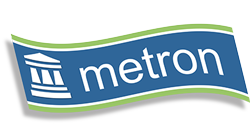Steve Roberts commented on my ‘Top 10
VMware metrics to help pinpoint bottlenecks’ blog and asked the question ‘Do
you have any numbers around this monitoring?’
So Steve I’ve put together the
following as a guideline :
CPU – The key here is to
monitor the overall Host CPU Usage and associated VM CPU Usage. When
using vSMP VMs count up the total numbers of vCPUs on the host to the number of
PCPUs the host has, if the vCPUs are overcommitted monitor your VM CPU Ready Time.
Values > 15% indicate the VM is waiting a significant period of time for
CPU. However, if the overall CPU Usage on the host is low, then the
impact of CPU Ready Time is likely to be mitigated. It also depends on
the types of workload that are running on your VM.
Memory – Just beware of over
commitment when deciding how much memory
is granted to a VM, monitor the VM Active Memory against the Host Memory
Consumed. You will want to see the Active VM Memory less than Host Memory
Consumed, otherwise it could indicate that the VM Memory does not completely
reside in Physical Memory and maybe in Swap. Also be aware of any limits
set on the VM or Resource Pool and whether a limit is necessary? Limits
are enforced by Memory reclamation and will increase CPU overhead of the ESX
host. A performance tip, is to monitor the Active Memory and set the
Granted Memory just above (allowing for longer peaks) the average value.
You can also guarantee the memory by using reservations, however this does
reduce the ability to overcommit virtual memory on an ESX host.
Disk I/O Latency – Couple of key metrics
to monitor here are:
Physical Device Command Latency where
you want to see values < 15ms, anything over indicates a slow array.
Kernel Command Latency where values
should be consistently 0-1ms, any > 4ms indicate that the Storage System
cannot support the amount of data being sent to it.
If you need more information I’ve done
a video ‘5 things you’ve always wanted to know about capacity managing Vmware
vSphere’ which you can watch on our Capacity Management Channel http://www.youtube.com/watch?v=WZJctffS8kM&feature=channel&list=UL
For those of you in the UK I’m running
a 1 day VMware Capacity Management Awareness Workshop in London on June 20th
(I believe there are a few places left, but don’t quote me on that) http://www.metron-athene.com/training/workshops/vmware_capacity_and_performance_essentials.html
If all else fails you can always hire
an expert to help through our professional services division.
I hope this helps and please keep those
comments coming.
Jamie Baker
Principal Consultant
